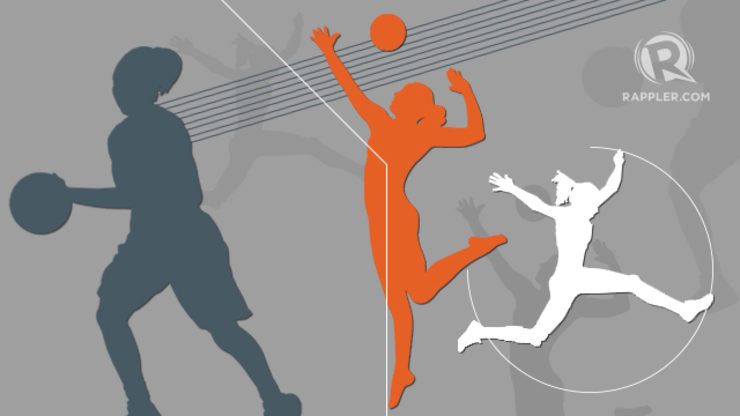SUMMARY
This is AI generated summarization, which may have errors. For context, always refer to the full article.

MANILA, Philippines – It’s UAAP season again. I turn on the TV and I see the cagers battle it out in front of hundreds of fans and supporters. I open the newspapers and I see not just one but multiple write-ups on the games.
It’s the same thing on social media; how many times will I have to skim through the memes on the players and the coaches, or see the same articles and critiques of teams shared and re-shared? Probably until another one comes along, and then another, and then another. You get the picture.
I’m an avid sports fan, but a part of me has always struggled to believe that the UAAP Men’s Basketball competition is in the same league as…well, the rest of the UAAP. I had the honor of representing my school in football for three UAAP seasons, but there were very rarely any crowds, and we were lucky to have even gotten features in newspapers and magazines. Mostly we trained, studied, and spent our free time looking for additional sponsors to support our team.
In stark contrast to all the glitz and glamor of the men’s basketball side, my experience of collegiate sports is probably more in tune with the experience of most other athletes in the Philippines.
Sports and higher education
In a country perenially plagued by weak infrastructure, and in a country with only one real professional league, there is always the question to be asked: where will promising young athletes go to get better? Collegiate competition is supposed to be the stage for the next generation’s class of national athletes, not just in basketball, but in all sports. Sure, there is the Palarong Pambansa and the University Games, but considering all things, the level of play is nowhere as consistently high across the board as it is in the UAAP.
The college recruitment process gathers players from all over the country, and realistically speaking, there isn’t an existing network that alternatively provides such a broad base of individuals with the opportunity to compete, get scholarships, and receive housing and regular stipends.
In the midst of basketball fever, I daresay ask: Why aren’t we doing more for other sports? And conversely, why aren’t we doing enough for the women who play them?
More than ‘just the men’
In a country of 100 million, it’s safe to assume that there isn’t a shortage of talent to be discovered. By sheer numbers alone, and granted that athletic ability is dispersed well along the Bell curve, we have what it takes to produce world-class athletes. Countries with much smaller populations than that of the Philippines have done it, so why can’t we?
Perhaps we’re too collectively in love with basketball to notice other sports, much less notice the women who play them. Next year the first Southeast Asian nation will have reached the grandest stage in football. It won’t be the Azkals, or any other men’s national team in the region, but it will be “The War Elephants,” the Women’s National Football team of Thailand.
It’s likely that women’s participation in sports, both in individual sports and team sports, will yield more success than the men’s side. If it’s any indication, the Philippines’ most realistic hope for Olympic gold in recent years have been shouldered by a woman, Marestella Torres, a long-jumper who plays in one of the so-called “other sports.”
As much as we pray that our men can play with the big boys of the international stage, perhaps we would do better to check the playing field. The world is changing and it’s no longer just a man’s sporting world. The London Olympics 2012 was heralded as the “women’s Olympics” because for the first time in its history all participating countries fielded in female delegates. Granted that more men still competed in the games, the International Olympic Committee is actively promoting for greater participation on the women’s side. The governing body of football in the world, FIFA, is elsewhere doing its part by issuing a directive that requires all football associations to develop the women’s game at home.
As international sports organizations are realizing the potential of women’s involvement in sports, so too are other countries. We could perhaps do well to get ahead before we fall behind.
We could do so much for sports in this country by doing right by “the fairer sex.” Maybe we could do even more for women by allowing them to engage in sports. Wouldn’t we all be healthier, fitter, and more knowledgeable for having mothers, sisters, aunts, and friends who have played sports and know its many values?
In a country that shines its spotlight so much on basketball, I am still hoping that other sports will get their due, and in that same breath, I hope girls and women everywhere get that same chance too. – Rappler.com
Bea Quintos is a former player for the UP Women’s Football Team. She used to be a goalkeeper, but is now looking for other goals to keep in both her personal and professional life. She graduated with a degree in Political Science last April 2014.
Add a comment
How does this make you feel?
There are no comments yet. Add your comment to start the conversation.